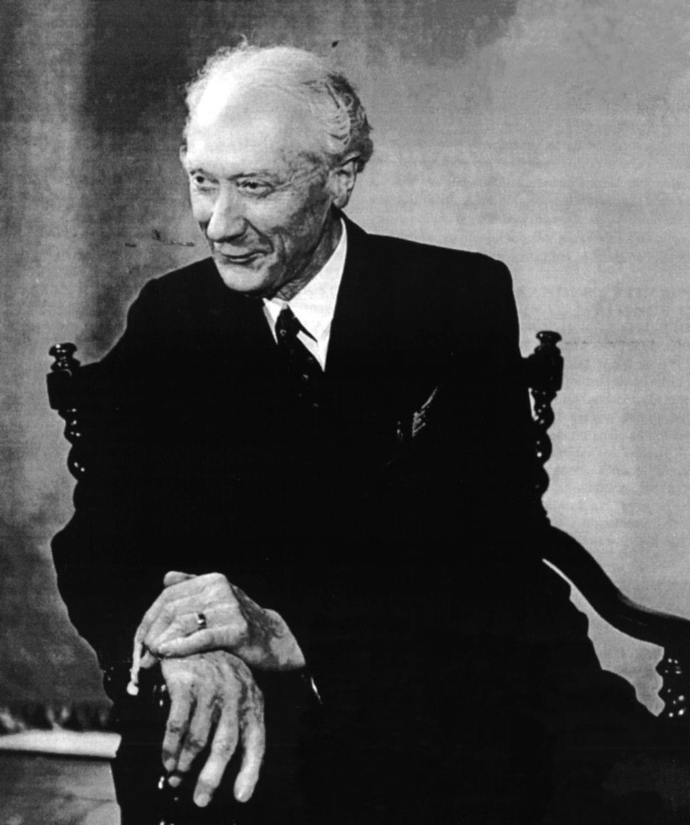What is the Alexander Technique?
F.M. Alexander
(1869-1955)
Frederick Mathias Alexander was born in Tasmania, Australia, in 1869. As a young man, he moved to Melbourne and began a promising career as an actor. Over time, during his successful Shakespeare monologues, he was increasingly plagued by voice problems. He consulted all kinds of doctors, but no advice or treatment worked. Only complete rest brought improvement, but each time Alexander took the stage again, his hoarseness returned. Since there was no obvious medical cause for his problem, Alexander decided to investigate whether perhaps he himself was doing something wrong while acting.
He began to observe himself in mirrors. He acted and recited as he did on stage, but what he saw in the mirrors was not what he himself was experiencing and feeling. He appeared to be doing things with his body that he would not have been aware of without the mirrors. He noticed that he tensed his neck, pushed his head back and down and pressed his larynx. He also noticed that he audibly gasped for air when he opened his mouth to speak. It became clear that he was repeatedly overusing his voice with all this. He continued to experiment and discovered that the tension in his neck was part of a larger pattern of tension throughout his body. He thrust his chest forward, hollowed his back and tensed up legs and feet. This whole pattern manifested itself even at the mere thought of acting.
Alexander then worked on a way to change these unconscious habit patterns, from a holistic approach. He found that that improved not only his voice, but also his stage performance and overall well-being and functioning. That was the beginning of the Alexander Technique.
Colleagues, friends and acquaintances asked Alexander to help them with similar problems. Thus he started his teaching practice, first in Melbourne and later in Sydney. In 1904, he transferred his teaching practice to London, backed by a number of eminent physicians, such as Sir Charles Sherrington, considered today the father of modern neurology.
Alexander also spent time in the United States during the war. There he met the famous educator and philosopher John Dewey. They found common ground in the idea that learning is strongly related to experience. Dewey wrote the foreword for three of Alexander's books.
In addition to his thriving practice in London, Alexander published four books on his technique over the years. Beginning in the 1930s, he started a teacher training program, which continued until his death in 1955. The new generation of teachers remained passionate about teaching the Alexander Technique. Today there are "Alexander Technique teachers" all over the world, and a number of national and international professional associations, which ensure that the Alexander Technique continues to evolve and be tested against new evolutions in the understanding of human functioning.
Alexander Technique Lessons
In Alexander Technique classes, you learn to recognize and change habitual patterns in your posture and movement (neuro-muscular re-education). Your body and your thinking are seen as a whole. You gradually become more aware of how you function in your daily life and in your specific activities (sports, music, professional actions, ...).
You learn that certain beliefs about your own functioning can be at the root of complaints and discomfort. You learn how you can create 'space' to respond differently and better to stimuli from within or without. The Alexander Technique helps you find more freedom in your thinking and movement.
In Alexander Technique classes, you are made aware of body and movement through subtle manual guidance and verbal instruction. Simple procedures such as sitting down and standing up serve as examples to illustrate the conjunction of thought and movement and to teach the basic principles of the Alexander Technique. In addition, "constructive rest" is also taught, with the student learning to pay attention to tension and relaxation while lying on a table.
Then during the lessons, work can be done on applying the principles to specific activities such as playing an instrument, working on a computer, taking care of a baby, riding a bike, cleaning and gardening, etc. Breathing can also be addressed.
